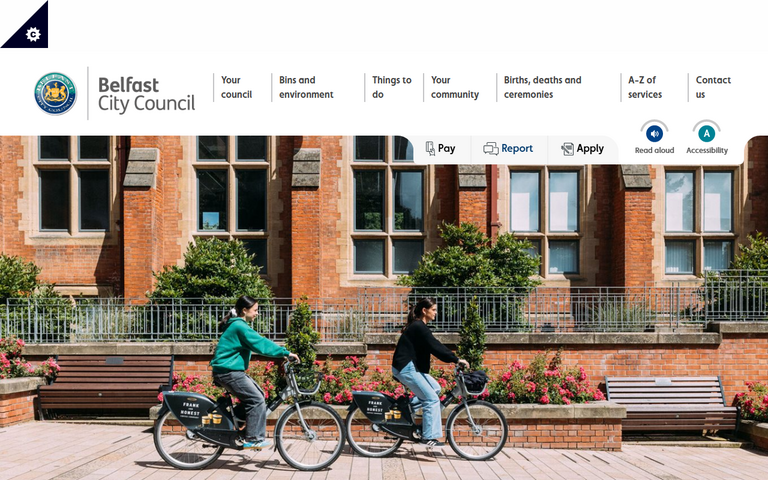Belfast
§ This page gives an overview of the Belfast local authority district, bringing together key facts, maps, and data to help you quickly understand the area. One of 361 district profiles on Baseview.
Overview ⁞ Belfast is Northern Ireland’s capital and largest city, serving as its economic, political, and cultural heart. Once a major shipbuilding centre, it has transformed into a hub for finance, tech, education, and tourism, with landmarks like City Hall, Titanic Belfast, and revitalised waterfront areas.
Belfast Boundary Map
This map shows the official boundary of the Belfast local authority district, based on the latest geographic data published by the Office for National Statistics (ONS). It provides a clear view of the district’s extent and helps you understand how the area fits within the wider regional and national landscape.
Contains OS data © Crown copyright and database right 2025. Source: Office for National Statistics licensed under the Open Government Licence v3.0.
Key Facts about Belfast
What region is Belfast in? Belfast is in Northern Ireland, a statistical region and also a country in United Kingdom.
Is Belfast a city? Yes, Belfast is a city. Belfast holds official city status as one of the 76 designated cities in the UK.
Who governs Belfast? The local government for this district is: Belfast City Council (local government district).
▶ Official website of Belfast City Council 🔗 belfastcity.gov.uk

Which police force covers Belfast? Policing in Belfast is provided by Police Service of Northern Ireland 🔗 psni.police.uk, which covers all 11 Local Government Districts of Northern Ireland.
Belfast in International Geographies
In the International Territorial Levels (ITLs) hierarchy, Belfast is an ITLs Level 3 area:
- (ITL 1) Northern Ireland
- (ITL 2) ⇒ Northern Ireland
- (ITL 3) ⇒⇒ Belfast
The International Territorial Levels are used by OECD member countries for statistical purposes to classify administrative areas. We have this listable page for easy browsing of ITL names and codes: International Territorial Levels.
Constituencies in Belfast
Belfast is divided into 5 parliamentary constituencies, listed below in alphabetical order.
A constituency is a specific geographical area that elects one Member of Parliament (MP) to represent them in the House of Commons. The United Kingdom is divided into 650 parliamentary constituencies, 18 of them are in Northern Ireland. We have this list page for easy browsing of all UK parliamentary constituencies: List of Constituencies.
Wards in Belfast
Belfast is divided into 60 wards, listed below in alphabetical order.
- Andersonstown
- Ardoyne
- Ballygomartin
- Ballymacarrett
- Ballymurphy
- Ballysillan
- Beechmount
- Beersbridge
- Bellevue
- Belmont
- Belvoir
- Blackstaff
- Bloomfield
- Cavehill
- Central
- Chichester Park
- Cliftonville
- Clonard
- Collin Glen
- Connswater
- Cregagh
- Duncairn
- Dunmurry
- Falls
- Falls Park
- Finaghy
- Forth River
- Fortwilliam
- Garnerville
- Gilnahirk
- Hillfoot
- Innisfayle
- Knock
- Ladybrook
- Lagmore
- Legoniel
- Malone
- Merok
- Musgrave
- New Lodge
- Orangefield
- Ormeau
- Poleglass
- Ravenhill
- Rosetta
- Sandown
- Shandon
- Shankill
- Shaw's Road
- Stewartstown
- Stormont
- Stranmillis
- Sydenham
- Turf Lodge
- Twinbrook
- Upper Malone
- Water Works
- Windsor
- Woodstock
- Woodvale
In the UK, a ward is a subdivision of a local authority area, used mainly for electoral and statistical purposes. Defined by the ONS, wards represent the primary unit for local elections, each returning one or more councillors to the local council. Wards are also used as a key geography for presenting population and census data.